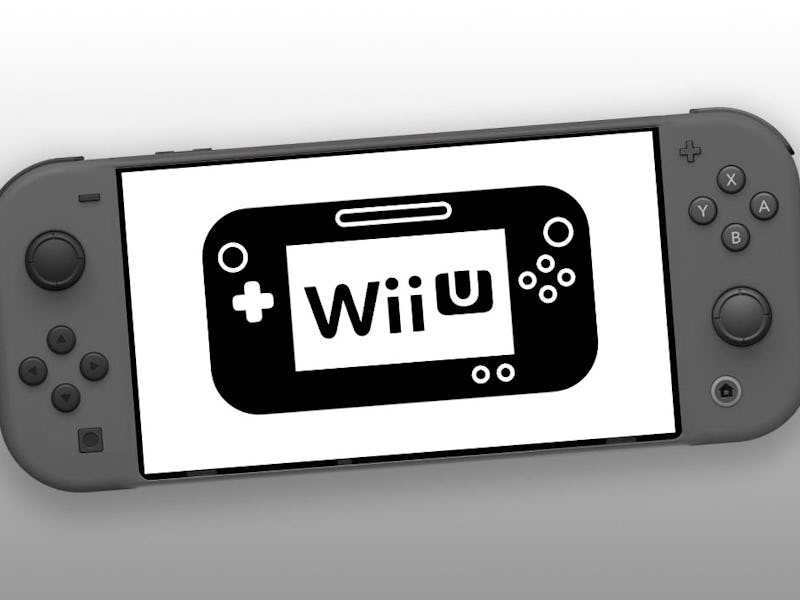Nintendo Switch Mini: How the Budget Console Could Redeem the Wii U's Flop
The Switch Mini could be everything the Wii U wanted to be.

Nintendo has reportedly begun production on a cheaper, primarily handheld version of its hybrid Switch console. The so-called Nintendo Switch “Mini” could launch as early as the end of 2019, an impression buoyed by the steady trickle of renders and leaks.
All of the hints about the gaming giant’s next big release have suggested that the Switch Mini will be a blast from the past. German tech blog WinFuture, which has a successful track record, at least for smartphone leaks, published an allegedly official mockup of the device that looks surprisingly similar to the Wii U, which first launched in 2012 and is widely considered a flop.
Nintendo has yet to confirm the console, but it hasn’t ruled it out either. Every analysts’ prediction and glimpse we’ve received to this point suggests the Japanese gaming giant will bundle everything gamers love about the Switch in the Wii U’s body.
But can the slimmed down Switch succeed where the Wii U failed?
The alleged Switch Mini render published by 'WinFuture'.
It’s a potentially costly question. Two years after the Wii U’s release, Nintendo had already racked up more than $15 million in operating loss, according to a January 2014 financial report. The Switch helped Nintendo regain its stride, selling more than 34 million units as of March 31. The Switch Mini could continue this forward momentum by offering a more affordable option for users to play Nintendo’s recent hit titles.
Switch Mini: Design and Features
Switch Mini renders so far have all depicted non-detachable Joy-Cons, which means they resemble a slim Wii U. The onboard display screen is flanked by two joysticks with accompanying buttons and a D-pad. To top it off, it may also come with a Wii U-inspired TV features.
Ben Arnold, the senior director of innovation and trends at the Consumer Technology Association told Inverse that he believes the console will come with the ability to transmit games to larger displays. In short, the new Switch Mini will essentially be a controller with a built-in touchscreen, which was a defining feature of the Wii U.
Taking the best and the worst of its recent consoles could finally realize Nintendo’s longterm ambition to deliver console-quality features in a pocket-sized device. But Nintendo can only deliver on that vision if the new Switch packs some serious improvements under the hood, which, fortunately, it is expected to do.
The Wii U also came with the ability to cast games onto a larger screen.
Switch Mini: Under the Hood
Internet sleuths and Eurogamer have steadily gathered evidence about the Switch’s chipset. The hardware is expected to be an upgraded version of the Nvidia Tegra X1 inside of current Switch consoles.
These upgrades will be enough to support some notable improvements. Expect double the random access memory (RAM) to reduce load times, improved battery life, and boosted graphics performance. In a best-case scenario, the Switch Mini might actually come with better internal specs than the original console while also being priced $50 to $100 cheaper. These details were mostly patched together using comments Nvidia employees appear to have made about the upgraded chip in multiple GitHub posts
An upgraded Tegra X1 could hugely benefit the Switch Mini, especially since it’s expected to be primarily played on the go. It would need a sizable battery life, especially if it won’t come with a charging dock like the original Switch. An upgraded Tegra X1 could be the secret weapon to ensure that the Switch Mini doesn’t constantly run out of juice.
The original Nintendo Switch’s battery life has been rigorously tested, and lasts anywhere from two and half to six hours, depending on what game it’s running. While the Wii U’s GamePad can clock anywhere from three to five hours.
Turning the Switch into a more portable gaming system with TV compatibility and a longer battery life could take the console to the next level. But at the same time, it could also be exactly what the Wii U was trying to be.